#anime vocabulary
Text
What seemingly random Japanese words you pick up on can potentially reveal what anime you're watching.
For example, I now know "doku" どく can refer to poison.
Thanks, The Apothecary Diaries!
Side note: It doesn't mean anything, but "doku" is really close to "Deku", which only furthers my hypothesis that Midoriya from My Hero Academia is a bulbasaur.
46 notes
·
View notes
Text
Barakamon vocab - part 1

量「りょう」=quantity
訳がない 「わけ」=there is no way
書「しょ」= calligraphy, handwriting
書道「しょど」=calligraphy
認める「みとめる」=to recognize
面倒「めんどう」= trouble
砂「すな」= sand
通る「とお」= to go by
物知り「ものし」= well informed person
悩み「なや」= distress
嘘「うそ」= lie
頼む「たのむ」= request
怪我「けが」= injury
不毛「ふもう」= unproductive
祭り「まつり」 = festival
約束「やくそく」 = promise
変わり「かわり」= instead
普通「ふつう」= normal
25 notes
·
View notes
Text
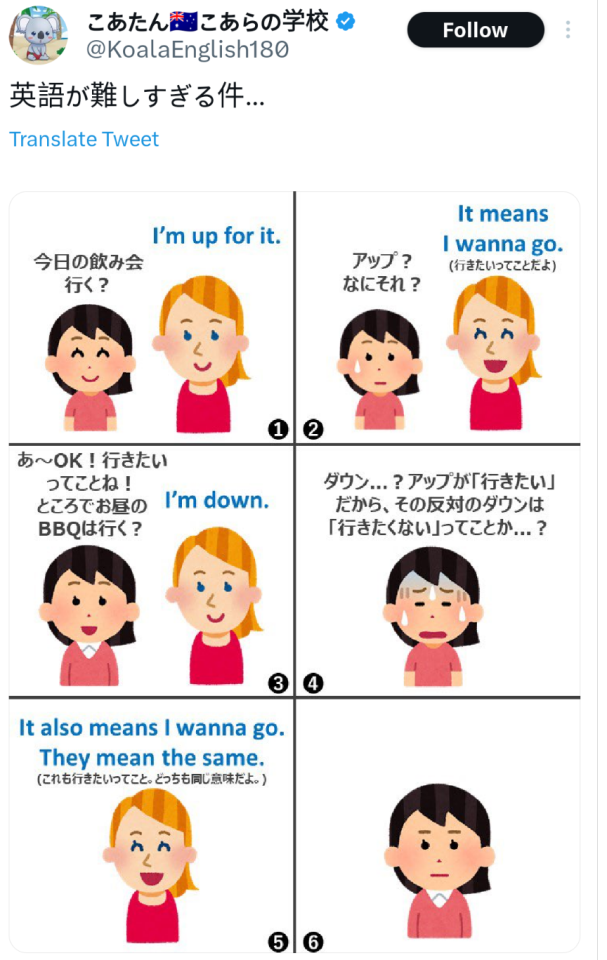
#japanese#learning japanese#japanese vocab#langblog#japan#anime#tumblr language#langblr#manga#japanese vocabulary
20K notes
·
View notes
Text
ornithophilous
adjective
1: having a fondness for birds : bird-loving
2: pollinated by birds
(via: https://www.merriam-webster.com/)
112 notes
·
View notes
Text
Wild vs. Feral, Domesticated vs. Tame, Native vs. Invasive, and Why Words Matter
Originally posted on my website at https://rebeccalexa.com/wild-vs-feral/
Recently a post crossed my dash on Facebook featuring a small group of llamas in the forests of the Olympic Peninsula. The caption described them as “wild” llamas (Lama glama). That may seem pretty innocuous to the average person, but to a naturalist it’s a gross mischaracterization. For one thing, llamas are completely domestic animals, no more wild than a cow or dog; they are descended from the guanaco (Lama guanacoe), which is a truly wild camelid. So this means that the llamas on the peninsula are feral, not wild. But why does the distinction of wild vs. feral matter so much?
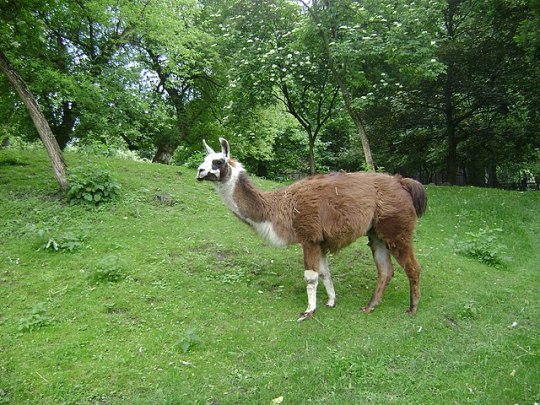
The terms we use to describe various species help us to understand their origin and, perhaps more importantly, their current ecological status. These concepts aren’t just relevant to scientists, however. Everyday people are constantly making decisions that can affect the ecosystems around them, and often these decisions are made without having a full understanding of their impact.
For example, look at how many people release unwanted pets into the wild, whether domesticated rabbits, goldfish, snakes, or other, more exotic animals. Some of these unfortunate animals end up dying pretty awful deaths due to starvation, exposure, or predation. But others manage to survive and reproduce, becoming the latest population of non-native–and potentially invasive–species in their ecosystem. This wouldn’t happen if more people understood the impact of non-native species, and how releasing captive animals puts native species at risk.
But it all starts with knowing that there’s a difference, and understanding the terms that explain why that difference exists. So let’s explore some vocabulary that can be used to describe species, whether animal, plant, or otherwise.
Let’s start with domestication, because there often seems to be confusion as to what makes a species domesticated. Domestication is a process that takes many years, often measured in centuries. Humans breed chosen animals for particular traits over a number of generations. As time passes, each subsequent generation becomes more different from the wild species it originated from, and eventually a new, fully domesticated species emerges from this process of artificial selection by humans.
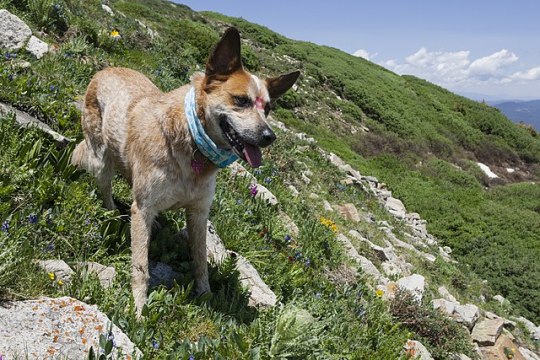
Dogs (Canis familiaris or Canis lupus familiaris) are the first animal humans domesticated in a process that started about 30,000 years ago. They evolved from the now-extinct Pleistocene wolf, a particular lineage of the gray wolf (Canis lupus), and it’s likely that the partnership began as some wolves showed less fear of humans while scavenging from our kills. By 14,000 years ago dogs were a distinct species (or subspecies) from wolves.
Dogs display very different characteristics from wolves. Their faces tend to be shorter with a more pronounced stop (the bump in the forehead where the muzzle meets the rest of the skull.) Floppy ears and curled tails are common, as are patchy-colored coats. Dogs tend to have weaker muscles than wolves of a similar size, shorter legs and smaller feet, smaller teeth, and a smaller size overall. This is a phenomenon known as neoteny, in which domesticated animals have a tendency to retain more juvenile physical traits of their parent wild species, and you can see it in domesticated animals across the board.
But it’s not just physical appearances that matter. Behaviorally dogs are generally more friendly toward humans; in fact, they’ve even developed some human-friendly body language that wolves don’t have, like “puppy dog eyes.” They can be easily trained and, unless poorly socialized, dogs generally enjoy the company of humans.
In many ways, physically and behaviorally, a dog is a wolf that never grew out of its puppy stage. While a young wolf pup may be able to live in someone’s house for a short time, as they grow older they become more destructive and less tolerant of human company. Your dog may love watching out the window during a car ride, but a wolf is going to be much more stressed out by the experience. Even wolf-dog hybrids have to be treated differently than your average domesticated dog because the wolf content has a significant effect on behavior.
This is just one example of how domestication isn’t just a matter of a few generations of selective breeding. You can also compare domesticated horses (Equus ferus caballus) with Przewalski’s horses (Equus ferus przewalskii or Equus przewalskii) or zebras (subgenus Hippotigris), domesticated cows (Bos taurus) with stories of fierce wild aurochs (Bos primigenius), and so forth. In every case the wild and domesticated counterparts are very different in both appearance and behavior.
Now, what about the term “tame”? Many wild animal species have been tamed over the years, either wild-caught individuals or those born in captivity. These tame animals may be more docile in comparison to their fully wild counterparts, but this generally takes a lot of handling and socialization from a young age. Moreover, tame animals retain a lot more wild behaviors than domesticated ones.

Take those supposed “domesticated” foxes that people want to have as pets. Most of the foxes available as pets have no relation to those in the famous Russian fox domestication experiment, but are from modern fur farm lines. And in fact the study foxes came from Russian fur farms, so the researchers were beginning with pre-tamed animals rather than truly wild ones. While some tame foxes may be more amenable to human handling than wild foxes, they are by no means domesticated. They are more prone to wild behaviors like urinating everywhere to mark territory, chewing on anything they can get their jaws on, nipping, and making a LOT of noise. Moreover, whereas dogs adapted to eating an omnivorous diet after millennia of eating alongside us, foxes need a more specialized diet than what you can get at a pet store.
Unfortunately there are unscrupulous people within the exotic pet trade who will advertise their tame (at best) stock as “domesticated.” This often leads consumers to thinking that they’re getting a much more tractable animal that will be as easy to care for as a cat or dog, and sets up everyone involved for disaster (except, of course, the seller with a fatter wallet.)
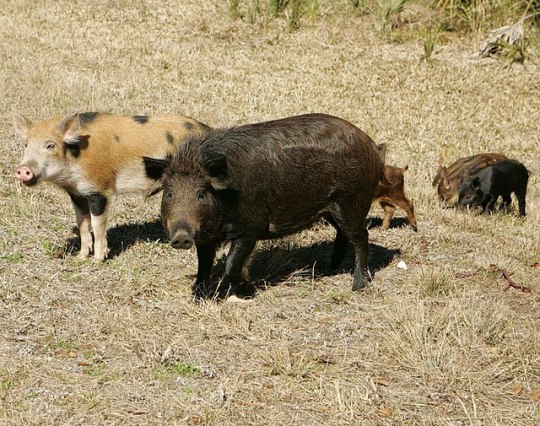
Next, let's compare wild vs. feral. A wild species is one that has never been domesticated, nor have its ancestors. Generally it will be a native species to its ecosystem, though non-native species can also be introduced to an ecosystem without ever having been domesticated. A feral animal, on the other hand, is a member of a domesticated species that has escaped or been released back into the wild and has survived to reproduce new generations that have never been handled by humans.
I’ve often heard people refer to the feral swine (Sus domesticus) that have ravaged ecosystems worldwide as “wild pigs”. They may behave in a wild manner, and they certainly look rougher and hairier than your average well-fed domesticated pig on a farm. It’s not uncommon for feral animals to regain some traits of their wild ancestors. However, that does not make them truly wild.
If you manage to wrest away a litter of newborn piglets from a feral sow and bottle-feed them, they are likely to be able to be socialized and kept in captivity, though they may still physically resemble feral pigs. They haven’t lost the deeply-ingrained genes that carry domesticated traits. However, if you try to raise a newborn Eurasian wild boar (Sus scrofa) or red river hog (Potamochoerus porcus), it will lack the domesticated traits of its farm cousins and show more wild traits as it ages, making it a rather unsuitable pet or farm animal. We also see this return to domestic traits in mustangs and other feral horses captured at a young age. While a mustang born in the wild may be tougher to work with at first than a foal born in captivity and handled from birth, the mustang will be much more calm and easier to train than, say, a zebra.
The problem with referring to feral animals as “wild” is that this suggests they are a natural part of the ecosystem they are in. Because a truly domesticated species (or subspecies) is not the same as the parent species, it has no place to which it is native as a wild animal.

A native species is one that has evolved in a given ecosystem for thousands or even millions of years. In the process it has developed numerous intricate interrelationships with many other species in that ecosystem, creating a careful system of checks and balances. A non-native species is any species that has been taken out of the ecosystem in which it evolved and placed in a different ecosystem where it is not normally found.
For example, here in North America the mourning dove (Zenaida macroura) is a wild native species. While it may resemble domesticated pigeons, it has never been domesticated even when kept in captivity. The Eurasian collared dove (Streptopelia decaocto), on the other hand, was introduced to the Americas after a few dozen individuals were released in the Bahamas in 1974. The feral pigeon (Columba livia domestica) is a domesticated species derived from the rock dove (Columba livia), which is native to Europe, west Asia, and northern Africa. Both the collared dove and pigeon are examples of non-native species. Most non-native species do not offer any benefits to the ecosystems they are introduced to because they do not have established relationships with native species. When they compete with native species for resources, they weaken the ecosystem overall.
Non-native species can be further categorized as naturalized or invasive, or even both. A naturalized species is a non-native one that has managed to establish reproducing populations, rather than going extinct without becoming established. Unfortunately, some people take this to mean that the species has become fully integrated into the new ecosystem. However, this is a process that again takes thousands to millions of years as other species adapt to the newcomer, which itself often also changes as it adapts to its new environment.
Ring-necked pheasants (Phasianus colchicus) are an example of a naturalized species in North America. Native to Asia and parts of Europe, they were introduced here as a game bird 250 years ago. While captive pheasants are regularly released into the wild to offer more hunting opportunities to humans, this species has likely been naturalized from its first introduction.
Again, “naturalized” doesn’t mean “natural”. Pheasants compete with native birds like northern bobwhite (Colinus virginianus) and prairie chickens (Tympanuchus spp.) Not only do they compete for food, nesting sites, and other resources, but they also spread diseases to native birds. Pheasants even engage in brood parasitism, laying their eggs in native birds’ nests and sometimes causing the native birds to abandon the nest and their own young entirely.
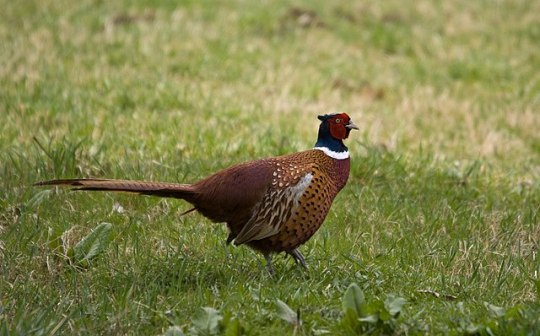
This means that the pheasants are also invasive as well as naturalized. Invasive species are non-natives that aggressively compete with, and sometimes displace or extirpate, native species. There are several hundred species that have become seriously invasive here, including both vertebrate and invertebrate animals, and numerous plants. But even the rest of the over 6000 non-native species that have become naturalized here still put pressure on native species, and have the potential to become invasive if their impact increases to a more damaging point.
Hopefully this gives you a clearer understanding of what these terms mean and why it’s important to know the difference. By knowing a little more about how your local ecosystem works and how different species may be contributing to or detracting from its overall health, you have more power to be able to make decisions that can preserve native species and help ecosystems be more resilient. Given that the removal of invasive species is one of the most important ways we can help ecosystems thrive in spite of climate change, it’s more important than ever that we increase nature literacy among the general populace. Consider this article just one small way to move that effort along.
Did you enjoy this post? Consider taking one of my online foraging and natural history classes or hiring me for a guided nature tour, checking out my other articles, or picking up a paperback or ebook I’ve written! You can even buy me a coffee here!
#wildlife#animals#nature#biology#science#scicomm#invasive species#wild animals#domesticated fox#feral hogs#long post#vocabulary#ecology#educational#biodiversity#conservation#environment#environmentalism#climate change#pigeons
2K notes
·
View notes
Text

502 notes
·
View notes
Text
ok i got another one
i can’t seem to find a comprehensive list of dub languages online rn, these are the audio options i can select on my netflix account – not included in the poll but also available to me are hindi, indonesian, thai and a japanese audio description. idk tho if those are all that were produced or if there’s more options that are just not available in my region, lmk if there’s something else i missed here! also if you’ve listened to/watched multiple of these options do kindly tell which one(s) you like best!
#personally im a original language with sub truther. not just with anime but in general#rlly tho i hope this gets around bc. well the results could provide some important insights on a lot of discourse in the fandom. imo#dungeon meshi#delicious in dungeon#i uh. for what it’s worth i really don’t like the english dub i think it sounds jarring and weird#german one is pretty hit or miss i’ve watched a few scenes from different episodes and some i liked and other. not so much#most of the VAs are good but don’t really fit their respective characters#french one is pretty good! also sounds like they put more budget/professional VAs into that one. which is no surprise#given how they are about anything comic or cartoon in france#i also listened into italian and spanish i think but. i forgor#other languages that i dont speak at all are harder to judge so haven’t checked those yet#with japanese i have atleast a very basic understanding of grammar and some common vocabulary and phrases
53 notes
·
View notes
Note
If I may be silly, would the Sumerians happen to have words for "pocket" or "monster"?
Love this question! "Pocket" in Sumerian is tun 𒂅, which is also "pouch, bag, case". There are several words for different types of monster, like ushumgal 𒃲𒁔 "(great) dragon, chimera" or mushhush 𒈲𒍽 "(snakelike) monster", but I don't know of one that would serve such a generic meaning. As an abbreviated form the one that makes the most sense is mush 𒈲 "snake", since serpentine-ness was a key element of many Sumerian monsters, but mushtuna 𒈲𒂅𒈾 "snake of the pocket" sounds like... not what we're going for.
I thought maybe one of the words for "creature" would help, but they're all pretty long, and would abbreviate to just ning 𒃻 "thing" - so I'm not sure if ningtuna 𒃻𒂅𒈾 "thing of/in the pocket" would quite work for "Pokémon". And there's no generic word for "pet" I can find in Sumerian, just words for specific animals.
If anything, I'd opt for a more creative translation using a word like ur 𒌨 "dog", which was used as a root for many kinds of animals, to make urtuna 𒌨𒂅𒈾 "pocket dog" (this is also how I'd refer to a small dog one might carry in a purse). Or how about kuli 𒆪𒇷 "(dear) friend" to make kulituna 𒆪𒇷𒂅𒈾 "pocket friend"?
If anyone else has a good suggestion for a "Pokémon" translation, let me know!
60 notes
·
View notes
Text
自動販売機
じどう はんばいき
jidou hanbaiki
販売機 is apparently vending machine all on its own, and 自動 signifies that it’s automatic? Which suggests manual vending machines…
手動販売機! HA! しゅどう, or shudou, for manual.
Apparently, gumball machines and the like count (first result on YouTube. That takes me back to when they were all over the place by grocery stores).
I want to expand my vocabulary, and one way to do that is to simply identify common words that will come up in things I’m watching.
That way, not only are those words recognized and hammered in, but the words surrounding them are more recognizable, and can gain context.
And I’m watching the vending machine isekai, so…
22 notes
·
View notes
Text
Japanese word of the day
いってらっしゃい (Hiragana)
行ってらっしゃい (Kanji)
pronunciation - itte-rashai

Meaning - have a good day or see you later.
Used with - family members leaving house, colleagues going for work trip, meetings etc.,
If you want to learn a bit more about the history of this word, please read more!
いっしょに日本語をべんきょうする!がんばってください!
Translation: let's study Japanese together! Let's work hard together!
Romanji: issho ni nihongo o benkyou suru! Gambatte kudasai!
I recently found out that this word which has come to mean have a good day, literally translates to "Go and come back!"
Basically the 行って (pronunciation: itte) means Go (or Journey, you will see this 行 Kanji in almost every sentence where something is leaving, going somewhere for example 行ってきます meaning "I'm going!') and (い) らしゃい (pronunciation: irashai) means come or welcome back
Basically,
行って + (い) らしゃい = Go + come back
Ko-San on Instagram explained it very well. The explanation goes like this -
In ancient Japan since there was no world order, anyone leaving on a work trip, or anything else from the village could die for various reasons. And Japanese people were firm believers of the power of words, this belief is called Kotodama. Therefore, by saying "Go and come back!" they are wishing their loved ones or colleagues a good journey.
#japanese#learning japanese#japanese vocabulary#hiragana#japan#anime#日本#日本語#kanji#katakana#spy x family#gifs#spy x family gifs#japanese word of the day#loid forger#anya forger#yor forger
56 notes
·
View notes
Text

#japanese#langblog#learning japanese#japanese vocab#japan#tumblr language#langblr#japanese vocabulary#manga#anime
278 notes
·
View notes
Text
if I had a nickel for every — wait a minute
(checks notes) squid-coded character????
#?????????????? another one???#one alone was surprising enough but like. for the eldritch god + maritime animals bit! sure! why not!!#but two???#for better or for worse my brain immediately latched onto 小章鱼 and decided that he was going to be my favorite character and.#he is a side character. why do I do this to myself. he's not even here most of the time#北极圈blogging#why is his fixation on studying vocabulary in the middle of the apocalypse so endearing!!!!! ugh!!!!!
25 notes
·
View notes
Text
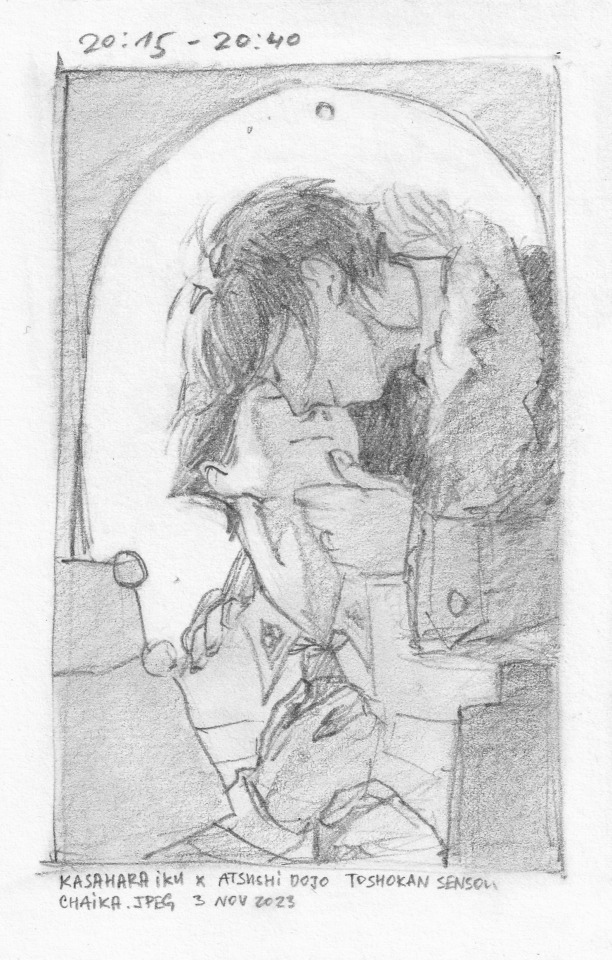

here's my contribution to the "library wars" fandom of five people
reference photos:
someone's wedding photography (couldn't find the set): http://www.k-meng.com/go-c102.htm
"Station 19"


#my art#1) i only watched the anime so this might be OOC but i want to imagine them this way and you can't stop me#2) i saw manga fans complain about the anime designs but i definitely like the anime ones more. i prefer realism to shoujo#3) i watched the anime bc i had to learn new vocabulary for my japanese class but oh god i just COULDN'T remember +#+ the word “library”. so i googled “toshokan” on MAL and found this anime and decided to watch 5 minutes just for the laughs. haha.........#4) the setting is ridiculously unrealistic but i liked the characters enough to feel the urge to draw them#(female lead being taller definitely contributed to that lol)#toshokan sensou#library wars#kasahara iku#atsushi dojo
81 notes
·
View notes
Text



Excerpt from Cowboy Bebop: The Jazz Messenger - History (translation below)
Planets
テラフォーミング 地球以の惑星を人類が住めるよう "地球化" してしまう技術である。 その実現にはケタ違いの資材、 ケタ違いの作業時間が必要とされ、とても現実的なものではなかった。 しかし位相差空間ゲートが開発されたことで資材の運搬が容易となり、 その実現はさほど困難ではなくなった。また、位相差空間ゲートに太陽光線を通過させることで光源を確保できることになり、より地球から遠い惑星にも移住が可能になったのである。
以下の惑星/衛星は、 テラフォーミング技術の成果で人類が移住可能となった星々である。
Planets
Terraforming is a technology to transform planets other than the Earth into environments similar to Earth so that humans can live on them. The use of such technology requires an inordinate amount of material and time, and, therefore, very unrealistic. However, the development of the hyperspace gate made the transportation of materials easier, and thus the application of such technology much less difficult. Moreover, by sending sunlight through the hyperspace gate, a reliable source of light was secured, making it possible for humans to migrate to planets farther away from the Earth.
The following planets/satellites are now inhabited by humans because of terraforming technology.
Venus 金星
都市から砂漠地帯まで惑星全土にわたって居住可能。 人口約5億。 2~3気圧・気温31~35度。空中に浮遊しているのはテラフォーミングのためにつくられた巨大植物プラント。【「ワルツ・フォー・ヴィーナス」のラストで出てくる街並みは、渡辺監督の意向で中近東風のものになったそう。また、設定では「ビバップ」世界の言語は英語と中華系が中心なのだが、 各惑星ごとに微妙にかたよりがあり、 金星ではアラビア語が多い】
Venus
Every part of the planet is inhabitable, from its deserts to its cities. Venus has a population of 500 million, atmospheric pressure of 2 to 3, and temperatures that range from 31 to 35 degrees Celsius. Floating in the sky is a giant plant that was created to terraform the planet. (The cityscape that appears at the end of Waltz for Venus was designed according to Watanabe’s personal vision of a Middle Eastern city. Additionally, the world language in the story setting for Bebop is mainly English and Chinese, but there are slight variations on every planet with the inhabitants of Venus usually speaking Arabic.)
Notes: I'm not entirely sure about the translation for the atmospheric pressure of Venus, but there is no unit in the Japanese text, so it's just been translated as is.
#anime#art books#cowboy bebop#japanese animation#shinichiro watanabe#storyboards#newtype magazine#japanese translation#old anime#90s anime#space cowboys#old school#oldanimeedit#classic anime#animeedit#dailyanime#90s#90s aesthetic#japanese language#learning japanese#japanese vocabulary#translator#science fiction#sci fi and fantasy#lore#cowboy bebop lore#anime credits
23 notes
·
View notes
Text
The amount of nonbinary people I've encountered that in some way relate their gender to deer is not insignificant, and I wonder why that is. Everyone always talks about nonbinary people and frogs but i think there's something here with the deer
#Sword speaks#like with me it's the antlered doe phenomenon#I identify with them in a way I don't do to other animals with similar hormonal deviations#like maned lionesses#I first started to identify with them when I learned I had pcos but didn't have the vocabulary at the time to articulate why#aside from the fact they had a similar hormonal deviation to me#(and even having pcos was a euphoric thing cause the thought was that it reinforced my not-a-normal-woman feeling)#cause I didn't associate the antlered does with womanhood or manhood but what I thought of#as the ability (and permission) to be Other than or Between#I later realized that was nonbinary gender euphoria but this was before I knew being nb was really a thing#I even wrote a short story about a character named Doe getting teased by their community#and them going to an Elder who recognized them as both Doe and Stag#(bro egg-me was trying so hard to figure it out)
57 notes
·
View notes
Text


Earth shattering revelations were had during japanese class last week.
Looking at this, I probably shoulda used deepl to help me with the grammar, but I wanted to challenge myself x)
Here's what I meant to say - under the cut
Me: In my country's culture, for plenty of festivals we-
Me: uh, "mask"? (Attempt to say the english word, if it was written in katakana)
My teacher: You'd say "kamen" (mask)
Me: Ah, kamen? Okay, understood. So, we make masks...
Me: HUH?! LIKE KAMEN RIDER?!?!
Mr. Rider: dragon how did you not figure this out by now
My teacher: hahaha yes, that's right.
#LOOK i figured kamen was like helmet. Okay.#And i never thought it was a common word used daily. I try not to base my vocabulary on tokusatsu or anime really.... but maybe i should 🤔#Its funny cuz online people will tell you 'anime vocabulary isnt used so anime is a bad way to learn!' And then my teacher will go#'You need to watch anime to learn ふつけい'#If youre looking for more funny moments i was the only person in class who knew what senpai and kouhai meant#And i felt so embarrassed over being a NERRRD that I wanted to dig a hole and hide
27 notes
·
View notes